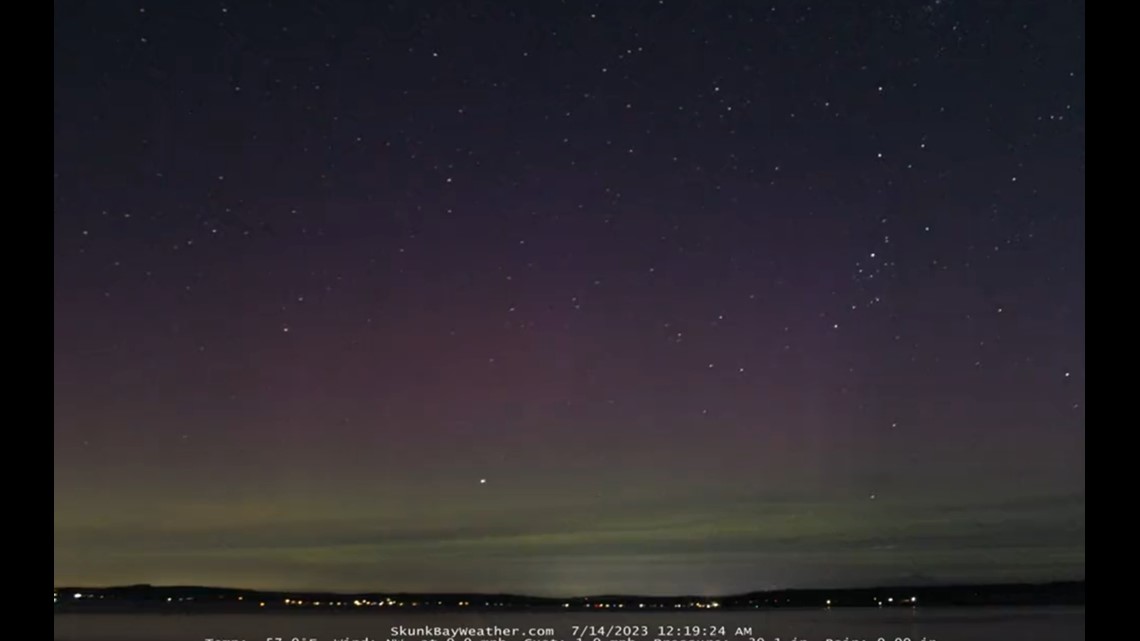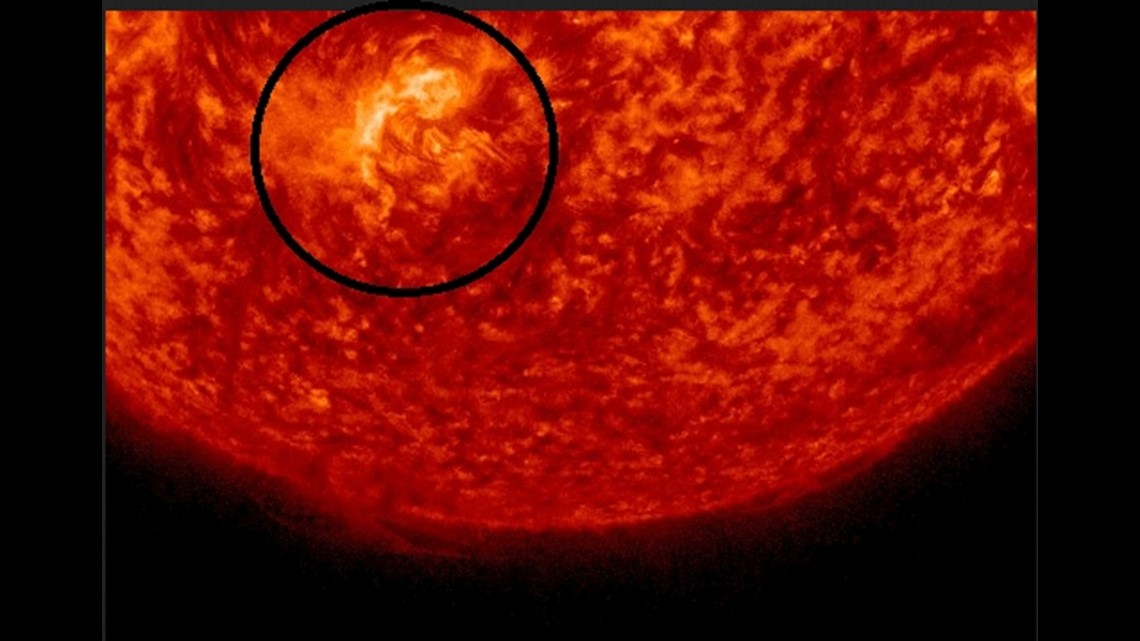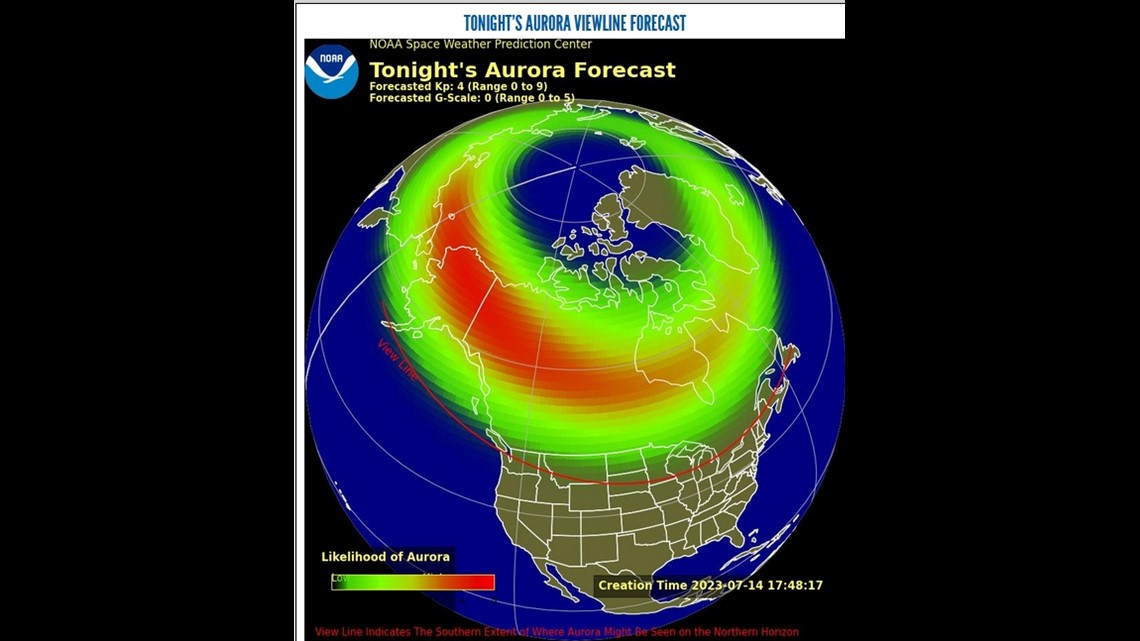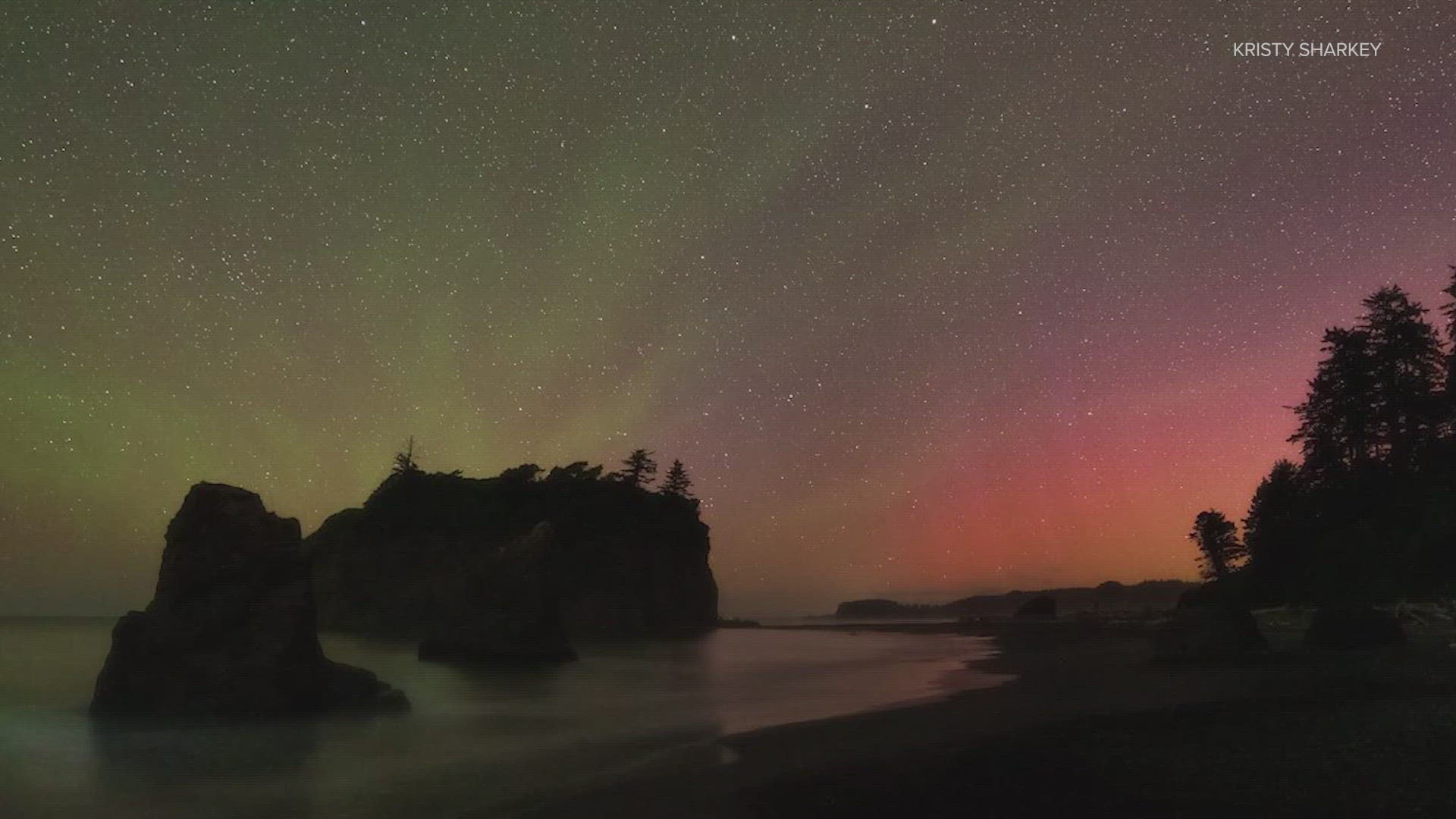SEATTLE — The Northern Lights may make an appearance in parts of Washington Friday evening. An updated forecast from the the NOAA Space Weather Prediction Center shows the aurora may be visible from the northern portions of Washington.
The aurora borealis is a glow in the sky produced when electrons trapped in the Earth’s magnetic field are accelerated by the solar wind and collide with atoms in the atmosphere in a ring centered on the magnetic pole of Earth, according to the National Oceanic and Atmospheric Administration’s (NOAA) Space Weather Prediction Center.
In the Northern Hemisphere, this is referred to as the Northern Lights.


There was a weak display of northern lights from Skunk Bay on the northern Kitsap Peninsula on Thursday night.
There are a couple of factors that could impact your ability to see the aurora borealis: light pollution and cloud cover.
The forecast shows that the skies will be clear in Washington on Wednesday night into Thursday. In terms of light, the moon won't be too bright, only 8% full, but light pollution will still play a role for those in more heavily populated areas.
The best place to view the lights will be outside of the cities, whose light pollution can diminish the faint greenish glow of the aurora. If you have time after the sunsets, get outside of the city and look at the northern horizon for the possibility to see the Northern Lights. The farther north you are, the better the chance of seeing Aurora.


The geomagnetic storm is being caused by a huge mass of plasma, super hot protons and electrons, that erupted from the surface of the sun on Tuesday. Computer models originally forecast it to arrive earlier this week, but Space Weather forecasting is still in the early stages, and satellites now indicate that the plasma will slam into the Earth's magnetic field later Friday Pacific Daylight Time.
NOAA suggestions for best viewing:
Find a good location: the closer to the magnetic pole -- the farther north the Northern Hemisphere -- the better. Try to find a place where you have a clear view to the north. Higher elevations can be better.
Find a dark place: try to move away from bright city lights. According to NOAA, “given the right vantage point, say for example on top of a hill in the Northern Hemisphere with an unobstructed view toward the north, a person can see aurora even when it is 1,000 km (600 miles) further north.”
Time the viewing well: the best viewing is as close to midnight as possible, so the 10 p.m. to 2 a.m. hours are ideal.
How the aurora borealis is measured: the Kp index
The aurora is measured using the Kp index, which is a scale of 0-9. NOAA’s tips on viewing the aurora share this scale for viewing:
For Kp in the range of 0 to 2, the aurora will be far north, quite dim in intensity, and not very active.
For Kp in the range of 3 to 5, the aurora will move further from the poles. It will become brighter and there will be more auroral activity (motion and formations). If you are in the right place, these aurora can be quite pleasing to look at.
For Kp in the range 6 to 7, the aurora will move even further from the poles and will become quite bright and active. At this geomagnetic activity level, it might be possible to see the aurora from the northern edge of the United States.
For Kp in the range 8 to 9, the aurora will move even further towards the equator and it will become very bright and very active. These are the events that create the best aurora and the extended auroral oval will be observable by most people. At these levels, the aurora may be seen directly overhead from the northern states of the U.S.


NOAA’s Space Weather Prediction Center forecast shows the areas where the Northern Lights are most likely to be seen. NOAA has forecast the Kp index will peak (along with auroral activity between about 8-11 p.m. PDT Friday evening and then gradually decrease during the rest of the night.

